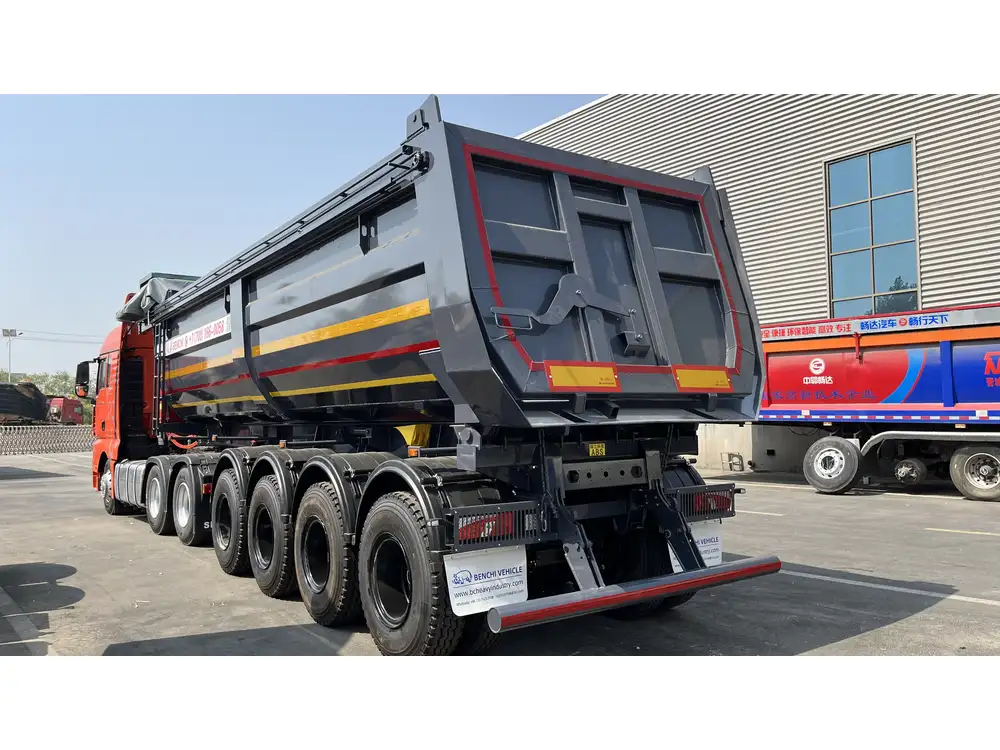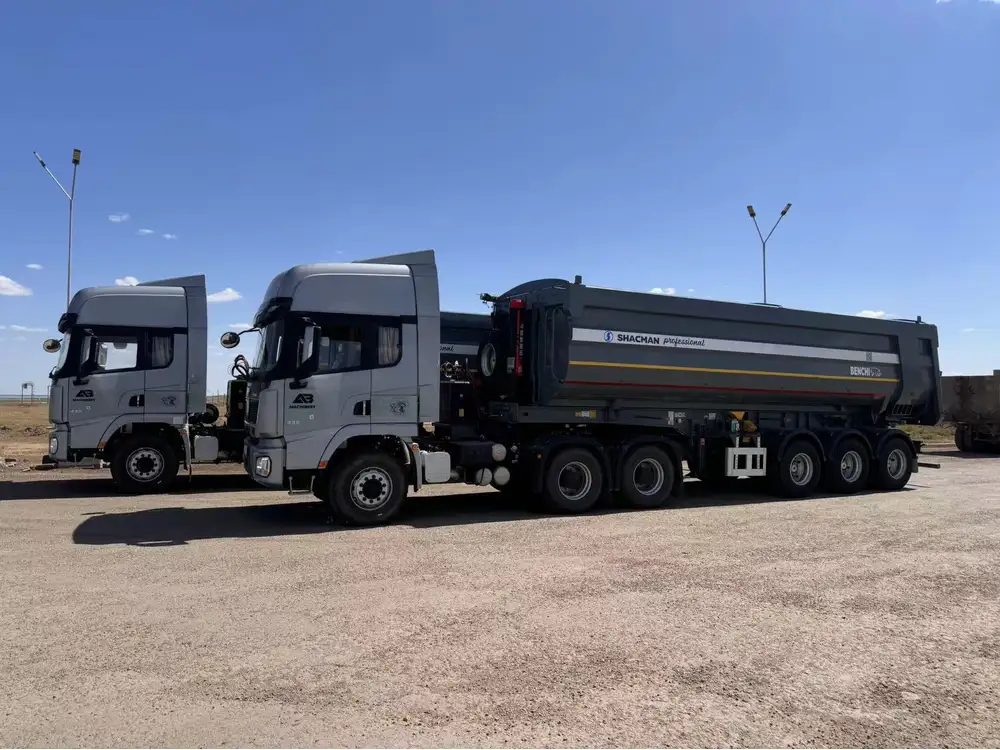When it comes to the logistics and transportation industry, flatbed trailers hold a significant position due to their versatility and cargo-carrying capacity. Understanding the dimensions of a flatbed is crucial for transport planners, shippers, and manufacturers. In this extensive guide, we will dissect various dimensions associated with flatbed trailers and address the applications, types, and standards of width, which ultimately helps in optimizing logistics.
Flatbed Trailer Dimensions Overview
1. Standard Flatbed Dimensions
Flatbed trailers come in a variety of sizes, but the standard width generally falls within the range of 8.5 feet (102 inches) for legal transportation in North America. Various flatbed sizes lead to different cargo capacities, thus influencing shipping strategies:
| Trailer Type | Typical Width | Typical Length | Max Payload Capacity |
|---|---|---|---|
| Standard Flatbed | 8.5 ft (102 in) | 48 ft, 53 ft | 48,000 lbs |
| Long Flatbed | 8.5 ft (102 in) | Up to 60 ft | 45,000 – 50,000 lbs |
| Step Deck Flatbed | 8.5 ft (102 in) | 48 ft, 53 ft | 46,000 lbs |
| Extendable Flatbed | 8.5 ft (102 in) | 48 ft, extendable to 70 ft | 45,000 lbs |

2. Legal Width Limitations
In the United States and Canada, the legal width for a flatbed trailer is typically set at 8.5 feet (102 inches). However, exceptions exist, particularly for oversize loads that may require permits. Understanding these legal frameworks is crucial for compliance in road transport, ensuring that overweight or oversized cargo does not lead to fines or transportation delays.
Factors Influencing Flatbed Width
1. Federal and State Regulations
Flatbed dimensions must adhere to both federal and state regulations. The Federal Highway Administration (FHWA) outlines specific criteria for vehicle dimensions, and variations by state can greatly affect legal limits.
- Federal Guidelines: The FHWA enforces that width, height, and length are compliant with national standards.
- State Regulations: Each state may impose additional requirements or exemptions. For example, some states allow loads wider than the standard width if special permits are acquired.

2. Trailer Configuration
Different trailer configurations are designed for unique transport needs, thus influencing overall width. For example:
Standard Flatbed: Commonly used for transporting building materials, machinery, and vehicles, the standard flatbed’s 8.5 ft width maximizes payload while remaining within legal transport limits.
Step Deck Flatbed: With a lower deck height, this configuration allows transportation of taller cargo without exceeding height regulations. The width remains consistent but flexibility in height provides additional handling options.
Extendable Flatbed: Designed for transporting oversized cargo, like heavy machinery or construction equipment, this trailer offers flexibility in length while adhering to the standard width.
Applications of Flatbed Trailers
Flatbeds are renowned for their versatility, enabling the transportation of a variety of goods. Understanding their applications can further aid logistics and transport planning:
1. Construction Materials
The construction industry frequently utilizes flatbed trailers for transporting heavy and bulky materials such as:
- Steel beams
- Piping
- Lumber
The ability to carry oversized and irregular-shaped loads without restrictions on overhang is a significant advantage.

2. Heavy Machinery
Flatbeds are ideal for moving heavy machinery like:
- Excavators
- Loaders
- Forklifts
Having a wide surface area allows for stable loading and unloading processes.
3. Specialized Cargo
Certain flatbeds can be equipped to handle specialized cargo requiring unique handling, such as:
- HVAC units
- Prefabricated structures
The width remains crucial to ensure that specialized cargo fits securely and safely on the trailer.
Configurations of Flatbed Trailers: Width and Other Dimensions
Understanding the various configurations based on width can shed light on the optimal choice for transportation needs.

1. Standard vs. Enhanced Width Trailers
Standard Flatbeds: These typically maintain a width of 8.5 ft (102 inches) and are designed for general cargo transport.
Wide Load Permits: For loads exceeding the standard width (commonly exceeding 8.5 ft), special permits must be obtained, which can entail additional costs and planning.
2. Comparison of Flatbed Types
| Flatbed Type | Width | Use Case |
|---|---|---|
| Standard Flatbed | 8.5 ft (102 in) | General freight, construction materials |
| Step Deck | 8.5 ft (102 in) | Oversized freight, maximizing height |
| Extendable Flatbed | 8.5 ft (102 in) | Longer loads like pre-cast structures |
Importance of Selecting the Right Width
Selecting the appropriate width for flatbed trailers is not just a matter of compliance; it has profound implications for logistics and freight efficiency.

1. Payload Efficiency
Choosing the right width ensures optimal payload capacity, maximizing profitability while minimizing transport costs. Efficient use of width translates to better utilization of trailer space, reducing empty cargo miles.
2. Safety Considerations
Adhering to width regulations is crucial for roadway safety. Loads that overhang too much can lead to accidents, pose hazards, and result in legal penalties. Ensuring compliance can avert mishaps and protect the integrity of transported goods.
3. Cost Implications
Non-compliance with width limitations can result in significant cost implications due to fines or additional fees for special permits. In contrast, proper width selection could mean lower transportation costs through optimized load planning.

Tips for Operating Flatbed Trailers
1. Load Distribution
Ensuring weight is evenly distributed across a flatbed trailer is pivotal for safe transport. Centering the load and maintaining balance can prevent swaying and instability while on the road.
2. Securement Practices
Utilizing proper securement practices is critical to ensuring the load remains intact during transit:
- Winches: Effective for adjusting and holding cargo securely.
- Straps and Chains: Essential for securing various types of loads.
- Edge Protectors: To prevent straps from damaging the cargo.

3. Equipment Knowledge
Familiarity with loading equipment, such as forklifts or cranes, enhances the safety and efficiency of handling the load. Understanding the limitations of each type of trailer also ensures the right trailer is chosen for specific freight needs.
Conclusion: The Critical Role of Flatbed Width in Logistics
In summary, the question of “how wide is a flatbed” transcends mere numbers; it encapsulates vital considerations pertaining to logistics, safety, and efficiency. Understanding the standard width of flatbed trailers, as well as the legal, practical, and economic implications of flatbed dimensions, is essential for anyone involved in freight transport.
Through careful consideration of the attributes, configurations, and applications of flatbed trailers, stakeholders in the transportation industry can make informed decisions that enhance productivity, ensure compliance, and protect cargo integrity. Whether it be a standard flatbed or an extendable configuration, knowledge of dimensions and their implications will empower transport planners to execute their strategies effectively and proficiently.
Key Takeaways
- Standard Width: Typically 8.5 ft (102 in); critical for compliance.
- Trailer Configurations: Various types available for specific needs—step decks for oversized equipment, extendable for long freight.
- Transport Implications: Width affects payload capacity, safety, and logistics efficiency.
By embracing these insights, logistics professionals can optimize their strategies pertaining to flatbed trailer dimensions, ensuring both safety and efficiency in freight transport.



